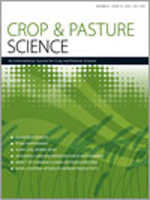Projected increases in atmospheric carbon dioxide concentration ([CO2]) and air temperature associated with future climate change are expected to affect crop development, crop yield, and, consequently, global food supplies. They are also likely to change agricultural production practices, especially those related to agricultural water management and sowing date. The magnitude of these changes and their implications to local production systems are mostly unknown. The objectives of this study were to: (i) simulate the effect of projected climate change on spring wheat (Triticum aestivum L. cv. Lang) yield and water use for the subtropical environment of the Darling Downs, Queensland, Australia; and (ii) investigate the impact of changing sowing date, as an adaptation strategy to future climate change scenarios, on wheat yield and water use. The multi-model climate projections from the IPCC Coupled Model Intercomparison Project (CMIP3) for the period 2030–2070 were used in this study. Climate scenarios included combinations of four changes in air temperature (0°C, 1°C, 2°C, and 3°C), three [CO2] levels (380 ppm, 500 ppm, and 600 ppm), and three changes in rainfall (–30%, 0%, and 20%), which were superimposed on observed station data. Crop management scenarios included a combination of six sowing dates (1 May, 10 May, 20 May, 1 June, 10 June, and 20 June) and three irrigation regimes (no irrigation (NI), deficit irrigation (DI), and full irrigation (FI)). Simulations were performed with the model DSSAT 4.5, using 50 years of daily weather data. We found that: (1) grain yield and water-use efficiency (yield/evapotranspiration) increased linearly with [CO2]; (2) increases in [CO2] had minimal impact on evapotranspiration; (3) yield increased with increasing temperature for the irrigated scenarios (DI and FI), but decreased for the NI scenario; (4) yield increased with earlier sowing dates; and (5) changes in rainfall had a small impact on yield for DI and FI, but a high impact for the NI scenario.
How to translate text using browser tools
13 November 2012
Adapting wheat sowing dates to projected climate change in the Australian subtropics: analysis of crop water use and yield
Davide Cammarano,
José Payero,
Bruno Basso,
Lydia Stefanova,
Peter Grace
ACCESS THE FULL ARTICLE

Crop and Pasture Science
Vol. 63 • No. 10
December 2012
Vol. 63 • No. 10
December 2012
climate change
crop modelling
crop water stress
evapotranspiration
irrigation requirements
water use efficiency
wheat




